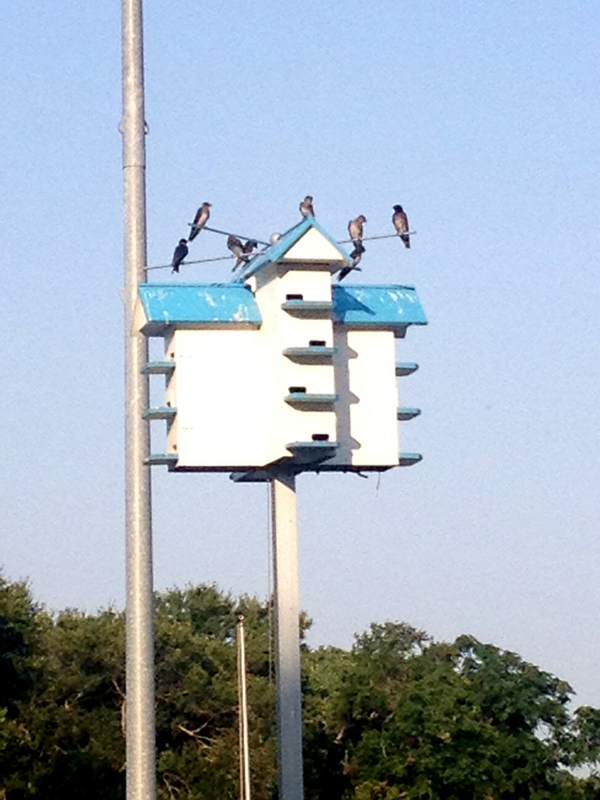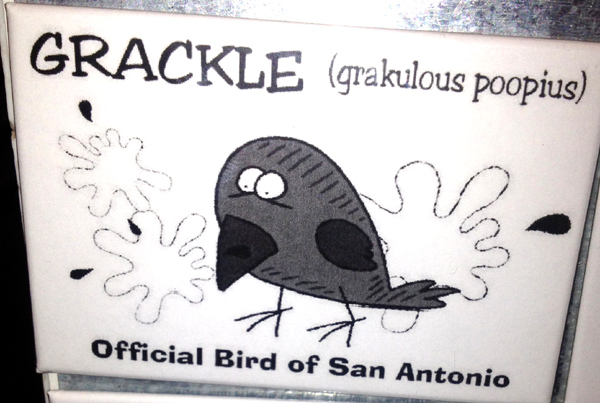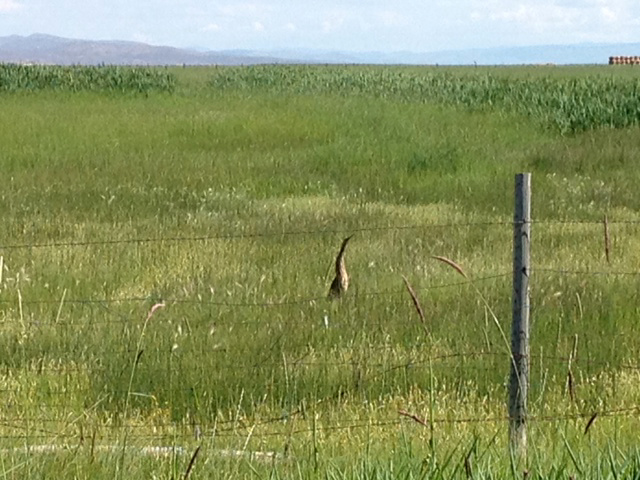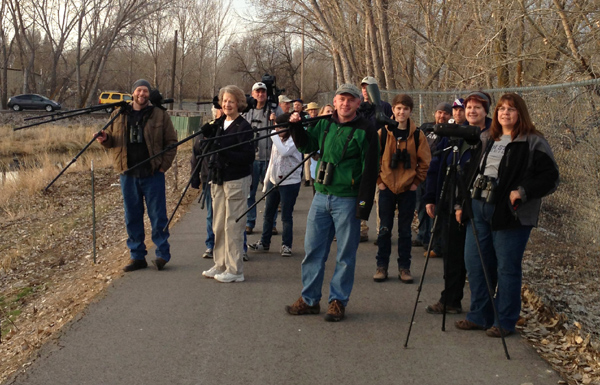Utah County Birders Newsletter
|
 |
Contents
April Meeting
Upcoming Field Trips
Captains Log
Bird of the Month
Field Trip Report
- Skipper Bay Trail
Field Trip Report
- South Utah County
Backyard Bird of the Month
March Hotline Highlights
Newsletter is now
Online Only
APRIL MEETING:
Thursday, April 11th,
2013 - 7:00 PM
Nikki Wayment from Hawkwatch International.
will present a talk titled "The American Kestrel: A
raptor in decline." Also, she will be bringing an
education bird for show and tell.
Meet at 7:00 PM at the Orem Public Library - 58 North State Street, Orem.
We meet downstairs.
------------
Note - meetings will be held at the Orem
Public Library while the Bean Museum is under construction.
20 April 2013 (Sat): Early morning trip to East Canyon Sage Grouse Lek, and East Canyon Reservoir. Meet at the park and ride at the mouth of Provo Canyon (by the gas station) at 5am to carpool and review lek etiquette. After observing the grouse, we will bird the area around East Canyon, and return home around noon. Led by Keeli Marvel.
27 April 2013 (Sat): We will visit Antelope Island for Shorebirds and migrants at Garr Ranch. We will meet at 7 AM at the Orem Center St. Park and Ride and carpool from there. We should be back in mid-afternoon. Led by Bryan Shirley.
Possible future trip - I'm thinking about
scheduling a weekend club field trip to Monterey or Half Moon Bay in August or
September to go on a Pelagic birding trip, and I'd like to know how many people
would be interested. Email keeli.marvel@gmail.com
if interested. A list of potential trip dates and pricing can be found here
http://www.shearwaterjourneys.com/schedule.shtml or
http://www.montereyseabirds.com/.
We are actively recruiting people to lead local half-day field
trips, any time, any place. If you would like to lead a field trip or if you
have any ideas for this year’s field trips, please contact Bryan Shirley at -
bt_shirley@hotmail.com
April Captains Log
by Keeli Marvel
 |
|
|
 |
|
|
Birding San Antonio
Last August I was sent to San Antonio for three weeks for training for a job
duty that was newly assigned to me at work. Anyone who has lived in Texas or
traveled there in the summertime knows that August is definitely not the best
time to visit, temperature-wise. Average temperatures there ranged in the high
90s to low 100s with humidity to match. However, this was my first time in
Texas, and I was excited and I planned to make the most of my free time there.
I flew in the day before training was to begin, picked up my rental car, dropped
off my luggage, and went exploring. One aspect of the city I found interesting
was the high water gates and enormous flood canals found around the lower parts
of the city. One of the locals I’d talked to later in the trip said that San
Antonio either gets too much precipitation, or not enough, and when they get too
much, they really get too much. In some places, flood gauges on the curbs or
light posts measure the water in feet above the road, and certain roads
disappear completely during high water events. It must be a headache for the
cleanup crews, as I get the feeling it happens during monsoon season fairly
regularly.
I’d done a little research and found a park not far from my hotel that looked
promising. Breckenridge Park is a huge tract of about 350 acres of old growth
wooded land that includes the San Antonio River, the Zoo, a Japanese garden, and
a golf course, and it was here that I found my first life bird of the trip– a
Black-Crested Titmouse. I also heard a few other species I’d seen on prior trips
back east – Carolina wren, Northern Cardinal, and Blue Jays. Not a bad start for
the first day of my trip! After my little exploratory birding trip, I found the
local grocery store, picked up a few things for the week, and headed back to my
hotel.
The first week of class flew by. My classmates were all either civilian pest
management people like myself, or active duty soldiers tasked with pest
management on their respective army installations. For the most part, we all got
along really well, and I found a couple of people willing to go do some birding
with me later in the trip.
The following weekend I hooked up with the local Audubon group for a beginner
bird walk at another nearby park called Olmos Park. If I were to give anyone
advice about birding in an area that is new to you, it would be this: Find the
nearest birding organization, and if at all possible, hook up with them. Their
local knowledge is priceless, and generally you will find people who share your
love of birding and who are eager to share their local birds with you. The local
Audubon chapter had converted a small shed into an education center in Olmos
Park and we met there and began walking the Judson Nature Trails through the
park. The biggest highlight of this trip for me was a lifer Golden-fronted
Woodpecker. We also saw a Purple Martin house just chalk full of Purple Martins,
Chimney Swifts zipping around, Eastern Phoebe, Ladder-backed woodpecker, Inca
Doves, White-winged Doves, Black Vultures, Northern Cardinals, Blue Jays,
Carolina Wrens, Black-crested Titmouse (titmice?) and Great-tailed grackles
(which as it turns out are the unofficial-official bird of San Antonio, and are
ubiquitous). At the end of our field trip we met back at the education center
for cookies and juice (a tradition I think maybe the UCB needs to adopt) and we
reviewed our trip species list. I got some great tips on where to find some
local rarities and an invite on a trip the following weekend to the Mitchell
Lake Audubon Center.
To be continued next month…
 |
|
Photo by Carol Nelson |
The Thunder-Pumper
(Botaurus lentiginosus)
by Carol Nelson
Last year I was determined to accomplish the Utah County Birders challenge.
Finding 236 species would test me as I had never seen that many species in one
year. As summer approached I was well on my way and shortly found my count to be
235. The day after I reached that total I was looking at Utah Bird’s web page
under Places to Bird and read Paul Higgins report on Crawford Mountain Road
which is located 1.5 miles north of Randolph, Utah. His description intrigued me
as did his report that I might be able to see the old Thunder Pumper there. I
had only seen it once in my life when it was scared out of hiding by Dennis
Shirley, but that was many years ago.
The next morning I headed out very early because Paul had said it was most
easily seen before 10:00 AM. I arrived and hunted and hunted until 10:00 AM. I
became very familiar with every cattail and bulrush in the area--but not with
the bird. I didn’t want to give up. Randolph is quite a distance from Provo, not
to mention the gas I had used, and I HATE FAILURE. Despite the 10:00 hour I
decided to give it one more try. I retraced my steps.
The Thunder-pumper is a solitary, stealthy and slow moving bird. Its neck and
breast, according to eNature.com, have chestnut stripes on a paler background
and the feathers on its back and upper wings are marbled and finely marked. It
has a white throat and supercilium, and black malar stripe. Its eyes and
dagger-like bill are both yellow. Males, females and juveniles are similar. Its
wingspan is 3 feet and it is approximately 2.5 feet long. The bird looks quite
large, but, according to Audubon, it weighs only about a pound. The Department
of Emergency and Environmental Protection says loss of habitat makes the bird an
endangered species at present, and it is protected under the United States
Migratory Bird Treaty Act of 1918. In years past, it was hunted for food and was
considered a delicacy. Its life expectancy is approximately 8 years of age.
When cooler weather comes and ponds around us freeze, the Thunder Pumper can be
found further south, and west along the coast where ice on ponds is not a factor
to be dealt with. It heads north again mid April to early May. The male may have
several females nesting within his territory. Females choose the nest site,
build the nest and are responsible for both incubation and tending the young.
And what is the male doing all this time—why making the most obnoxious sound he
can muster up trying to attract other females, I suppose. This unmelodious call
has prompted many folk names. Thunder-pumper, Stake-driver, and Water-belcher
are a few. The first description I heard of its call was “regurgitation”. In all
field guides the Thunder-pumper is known as the American Bittern. When alarmed,
instead of taking flight like other birds, it will stand motionless with its
bill pointed straight up and its body contracted. This habit and its coloring
make it very hard to see in the reeds.
I finished my retracing without success and finally decided to head for home.
About 100 feet from the Oxbow on Weston Lane, a side arm of Crawford Mountain
Road, a large bird flew overhead. I decided to back up and check it out. As I
turned my head to back up, in a grassy field to my right, I noticed a horizontal
log just over the fence and a perpendicular log out a ways beyond it. I picked
up my binoculars to look at them and started bouncing up and down. The
perpendicular log had a yellow eye and a yellow bill pointing skyward. The
Thunder-pumper was doing his thing. All I had was my iPhone, but I took a quick
shot with it, and then just sat, looked and enjoyed one of God’s creations and
the satisfied feeling I had.
If you would like to write an article for the Bird of the Month, please contact
Eric Huish -
erichuish@gmail.com
Click here for past 'Birds of the Month'.
Field Trip Report
Skipper Bay Trail & Provo Airport - March 16th, 2013
by
Eric Huish
 |
|
UCB at Skipper Bay Trail - photo by Leena Rogers |
On Saturday, March16th, 28 Utah County Birders met for
a field trip led by Bryan Shirley. We visited Skipper Bay Trail and the Provo
Airport Dike.
We found over 40 species along our 1 mile walk down the Skipper Bay Trail.
The most exciting find was a male Eurasian Wigeon only 700 feet down the trail
from where we had parked. We almost missed it. We had checked the field
with our scopes once already. Then farther down the trail we stopped again
to look back and check the same spot but with better lighting. The Wigeon
was a lifer for several people in the group. Other Skipper Bay highlights
were a Snow Goose, 18 Tundra Swans, Wood Ducks, Dowitchers, and newly arrived
Tree Swallows - You can see the full checklist here -
http://ebird.org/ebird/view/checklist?subID=S13416140
We then drove around the Provo Airport Dike. We didn't spend as much time
here and there dike was not as birdy as Skipper Bay. Best birds here were
more Tundra Swans, a kettle of 6 immature Bald Eagles all soaring together and a
lingering Rough-legged Hawk. The car I was in returned to the east end of the
dike to drop people off at their cars after the trip. We saw a flock of
about 100 American Crows flying high overhead heading North. Full Checklist here -
http://ebird.org/ebird/view/checklist?subID=S13416173
We had a great time and got great views of beautiful birds.
Field Trip Report
South Utah County - March 30th, 2013
by Dennis Shirley
Eight Utah County Birders found time away from the
Easter weekend festivities to spend four hours Saturday morning on a UCB field
trip. Areas looked at included; Benjamin Slough, Lincoln Beach, Le Baron Point,
Genola, and Goshen. Sixty birds species were recorded, several of which were FOY
for State or County.
Most notable birds included; Black-necked Stilt, Long-billed Curlew, Franklin's
Gull, Merlin, Ferruginous Hawk, Mountain Bluebird, and Sage Thrasher.
March 2013
Harold Clayson - Salem
Sunday morning I went out for the paper and had 2 Downy Woodpeckers
drumming on 2 separate telephone poles. They took turns, one on a G pole, the
other on a B flat pole. You know the loud tones they can produce.
Jeff Cooper - Pleasant Grove
My March yard bird of the month was definitely the Sharp-shinned Hawk
that took out a Robin and was dining on it in my backyard. I was able to watch
it from a close range and got some nice photos to enjoy when I need a quick
raptor fix.
Eric Huish - Pleasant Grove
I had a male Cassin's Finch at the feeders a couple of days.
Leila Ogden - Orem
The Screech-Owl stayed in my box for 3 weeks and then left. Haven't seen
it since. I still have the Red-breasted Nuthatch that visits my feeders
occasionally.
Leena Rodgers - Provo
Backyard bird of the month for us was a Red-breasted Nuthatch which made
a quick visit to check out our old plum tree and feeders.
Dennis Shirley - Elk Ridge
My backyard bird of the month is a toss-up between an adult
Golden Eagle
circling low over my backyard on the 18th, or a high flying migrating flock of
Sandhill Cranes
on the 24th.
Alton Thygerson - Provo
California Quail were once seen frequently in the backyard. However,
during the past several years, cats have greatly decimated their numbers.
Hopefully, a pair which has been seen a few times this month will survive the
cats.
Report your favorite backyard
bird each month to Eric Huish at 801-360-8777 or erichuish@gmail.com
Newsletter Announcement. The Utah County Birders Newsletter is now online only.
We've decided to stop the regular paper mail version of the UCB Newsletter. This will save our club on Printing, Postage and Paper. If you would like an email notice each month when the Newsletter is posted online please send an email to Eric Huish at erichuish@gmail.com or subscribe to the ucbnet mailing list. To subscribe to ucbnet just send an e-mail to ucbnet-subscribe@utahbirds.org
We are willing to print the online version of the newsletter and mail it out to anyone who still wants a paper copy or who doesn't have internet access. If you know of anyone who enjoys the UCB Newsletter but doesn't have internet access please let Eric Huish or Keeli Marvel know and we will make sure they get a copy.